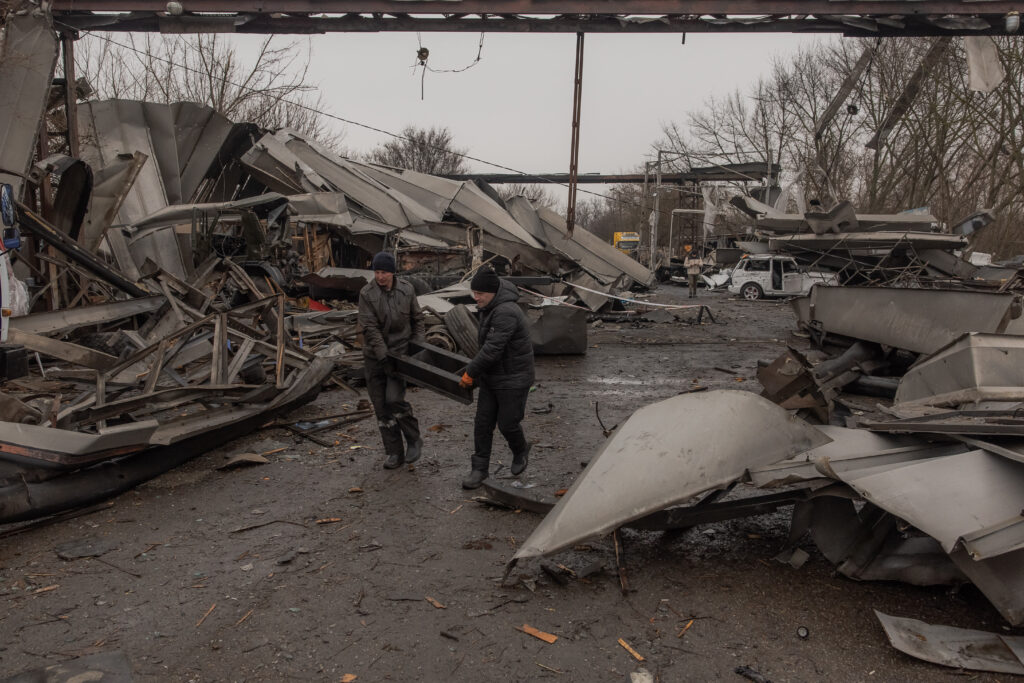
- ARAB NEWS
- 12 Jul 2025

TOKYO: Japan’s Reconstruction Agency is sharing insights garnered from the aftermath of the March 2011 earthquake and tsunami with nations facing similar challenges.
In the current fiscal year from April, the agency has drawn up “Great East Japan Earthquake Lessons Learned & Know-How Gained.” The document is an English version of the original Japanese text that compiles from many regions examples of rebuilding the lives of disaster victims and infrastructure reconstruction.
The English version of this wealth of knowledge has been provided to Turkey and Syria, both of which suffered significant devastation from a powerful earthquake in February, as well as to Ukraine, currently battling invasion by Russia. Japan hopes to contribute its experiences in disaster recovery and reconstruction to assist Ukraine in rebuilding areas affected by the ravages of war.
The original Japanese document was published in March 2021, marking a decade from the 2011 disaster. The task of assembling the collection was commissioned to the Hyogo Earthquake Memorial 21st Century Research Institute, a public interest incorporated association based in Kobe, the western Japanese port city hit hard by the Great Hanshin Earthquake in 1995.
Organized into four key fields–“support for disaster victims,” “reconstruction of homes and cities,” “revitalization of industries and livelihoods,” and “collaboration and posterity”–the collection delves into 66 projects undertaken by local governments and businesses.
Cases were also categorized into phases of “emergency response,” “recovery,” “early reconstruction” and “late reconstruction.”
The English version of the collection has been available to the public on the agency’s website since June this year. According to then reconstruction minister Hiromichi Watanabe, the release of the resource was “a gesture of reciprocity” for the support Japan received from around the world in the aftermath of the 2011 disaster.
Ahead of the publication, Watanabe held a meeting with Oleksandr Kubrakov, Ukraine’s deputy prime minister for restoration and minister for communities, territories, and infrastructure development, and presented him with the English version of the collection.
Kubrakov stressed the significance of Japan’s know-how for Ukraine and said Ukraine plans to move forward in its reconstruction efforts by drawing inspiration from successful examples in Japan, according to Japanese officials.
In Ukraine, a number of cities bore the brunt of the Russian invasion, resulting in widespread devastation. Housing, transportation networks and various types of other infrastructure facilities across the nation suffered substantial damage.
While the casualty toll continues to rise, citizens who managed to escape the war find themselves in extended periods of evacuation. Ukraine is expected to grapple with a multitude of challenges reminiscent of those faced during Japan’s reconstruction after the 2011 disaster. These issues include providing mental care for children and disposing of massive amounts of debris.
The Reconstruction Agency has established communication channels with Ukraine, in line with a memorandum of understanding exchanged by the two ministers during their meeting. It focuses on advancing sustainable urban reconstruction and addressing other relevant issues, with the aim of fostering the continued sharing of lessons Japan has acquired from disaster reconstruction efforts.
An agency official said, “We hope to extend support while engaging in dialogue with Ukrainian officials.” There are also plans to collaborate with Ukraine to start technical support and expert training through bilateral seminars and other opportunities.
Meanwhile, local governments in Japan have launched initiatives to share lessons from disaster reconstruction efforts.
The prefectural government of Hyogo, where Kobe is located, has set up a study panel of experts dedicated to offering support in accordance with the concept of “creative reconstruction,” a notion that emerged in the aftermath of the 1995 Great Hanshin Earthquake and was subsequently promoted in response to the March 2011 catastrophe.
In August, the Hyogo government finalized a memorandum of understanding on its commitment to assistance with the Ivano-Frankivsk oblast in western Ukraine. Assistance efforts are set to start in the areas of psychological care for victims and rehabilitation with prosthetic devices. Under the memorandum, Hyogo will host specialists from the Ukrainian region for training sessions.
Given Japan’s susceptibility to natural disasters, such exchanges hold promise for the future. There are hopes that the sharing of lessons Japan has learned from disaster reconstruction will play a role in aiding the recovery and reconstruction of countries and regions tackling the aftermath of various natural disasters and conflicts.
JIJI Press